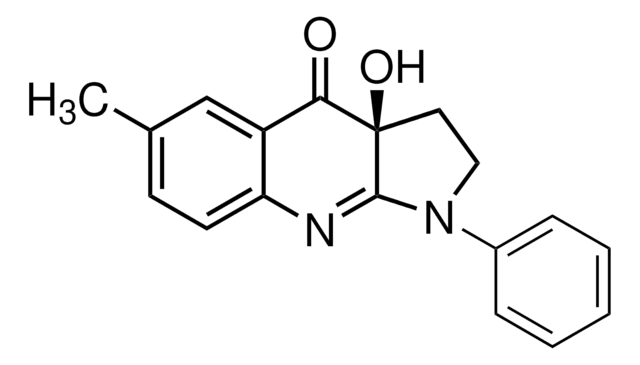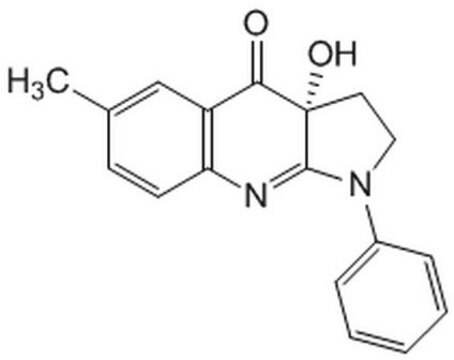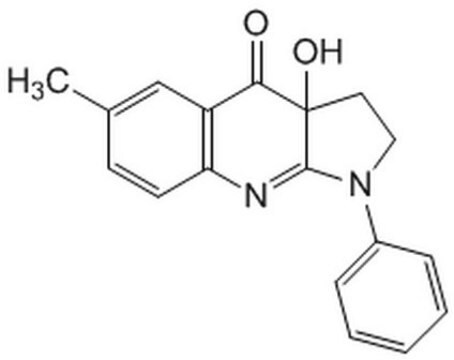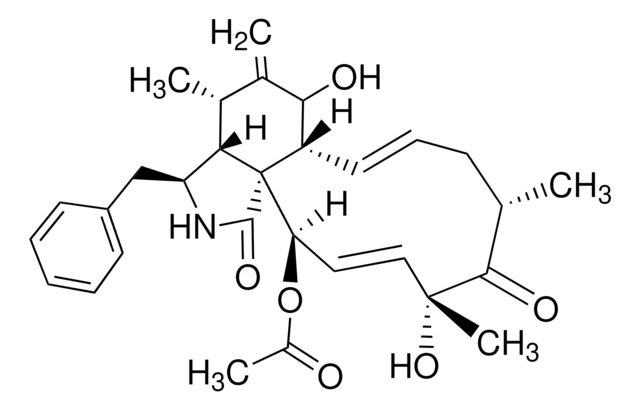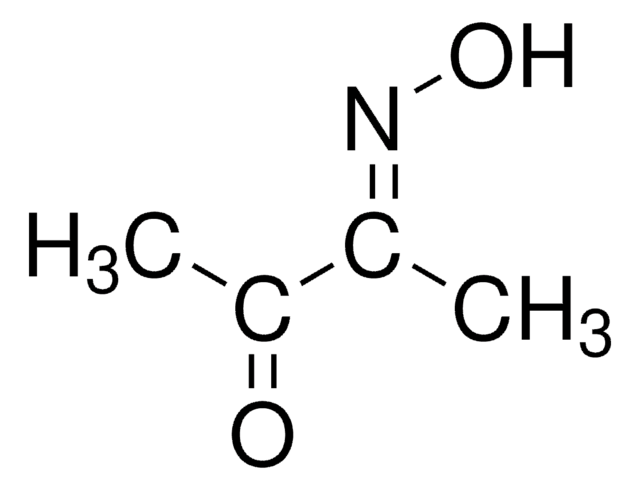203391
(-)-Blebbistatin
≥98% (HPLC), solid, ATPase inhibitor, Calbiochem®
Synonym(e):
(-)-Blebbistatin
About This Item
Empfohlene Produkte
product name
(-)-Blebbistatin, The active enantiomer of (±)-Blebbistatin that accounts for the inhibitory activity towards ATPase and myosin II-dependent cellular processes.
Qualitätsniveau
Assay
≥98% (HPLC)
Form
solid
Wirksamkeit
2 μM IC50
Hersteller/Markenname
Calbiochem®
Lagerbedingungen
OK to freeze
protect from light
Farbe
yellow
Löslichkeit
methanol: 1.5 mg/mL
100% DMSO: 100 mg/mL
90% DMSO: 75 mg/mL
Versandbedingung
wet ice
Lagertemp.
−20°C
InChI
1S/C18H16N2O2/c1-12-7-8-15-14(11-12)16(21)18(22)9-10-20(17(18)19-15)13-5-3-2-4-6-13/h2-8,11,22H,9-10H2,1H3/t18-/m1/s1
InChIKey
LZAXPYOBKSJSEX-GOSISDBHSA-N
Allgemeine Beschreibung
Biochem./physiol. Wirkung
Verpackung
Warnhinweis
Rekonstituierung
Sonstige Hinweise
Shu, S., et al. 2005. Proc. Natl. Acad. Sci. USA102, 1472.
Kovacs, M., et al. 2004. J. Biol. Chem.279, 35557.
Straight, A.F., et al. 2003. Science299, 1743.
Rechtliche Hinweise
Lagerklassenschlüssel
11 - Combustible Solids
WGK
WGK 3
Analysenzertifikate (COA)
Suchen Sie nach Analysenzertifikate (COA), indem Sie die Lot-/Chargennummer des Produkts eingeben. Lot- und Chargennummern sind auf dem Produktetikett hinter den Wörtern ‘Lot’ oder ‘Batch’ (Lot oder Charge) zu finden.
Besitzen Sie dieses Produkt bereits?
In der Dokumentenbibliothek finden Sie die Dokumentation zu den Produkten, die Sie kürzlich erworben haben.
Unser Team von Wissenschaftlern verfügt über Erfahrung in allen Forschungsbereichen einschließlich Life Science, Materialwissenschaften, chemischer Synthese, Chromatographie, Analytik und vielen mehr..
Setzen Sie sich mit dem technischen Dienst in Verbindung.